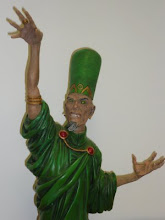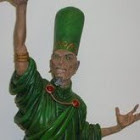 A very enjoyable Swedish police procedural. A man is found murdered in a his very expensive house, his wife was a partner in a very high profile failed dot com enterprise. When two further victims are found the connections to among all of the the victims start to accumulate. Inspector Irene Huss is assigned to the case and the investigation leads directly into the welter of greed and pursuit of massive financial returns that underlay the dot com bubble. The investigation is very well set up, the leads are plausible, the reveals are very well staged and the final unraveling is thoughtful and satisfying.
A very enjoyable Swedish police procedural. A man is found murdered in a his very expensive house, his wife was a partner in a very high profile failed dot com enterprise. When two further victims are found the connections to among all of the the victims start to accumulate. Inspector Irene Huss is assigned to the case and the investigation leads directly into the welter of greed and pursuit of massive financial returns that underlay the dot com bubble. The investigation is very well set up, the leads are plausible, the reveals are very well staged and the final unraveling is thoughtful and satisfying.The plot mechanics are really well set up, the excesses of the dot com which seem so astonishing in retrospect were entirely self perpetuating in the heat of the scramble for the new frontier of commerce and consumers money. Helene Tursten uses this background very convincingly to draw a very tight plot around an group of sufficiently unscrupulous people who rode the wave of investment money for all it was worth. The consequences of the the bursting of the bubble and the way that so much money simply evaporated are neatly followed through.
The cast are a pleasure to spend time with, Irene Huss is competent, confident, successfully married and a working mother. She is making all the aspects of her life work with the support of her family and a willingness to get on with her life as it comes to her. The rest of the cast are given room to breathe and express themselves, their professional and domestic lives are not spectacular, they provide enough detail to lift them up and give them enough depth to engage the reader.
With a central character as calmly competent as Irene Huss the book is rather low key, the internal conflict in an investigation that is a feature of the genre is absent. The reader has to be pulled into the story by the suggestive details of the plot and the cast. Helene Tursten has considerable confidence in her writing that lets the story work for itself and the reader is quietly and very firmly engaged by the writing without ever being battered by it. The story is never slow, it is always in motion either professionally or domestically and the balance between the two is natural and strong. There is room for the reader to slip fully into the story and enjoy the unraveling of the plot as it twists and uncoils in a unexpected and satisfying way.
The translation by Laura A. Wideburg manages the tricky task of appearing to be both the first language of the story and keeping it clearly and naturally a Swedish context. First rate crime fiction.







